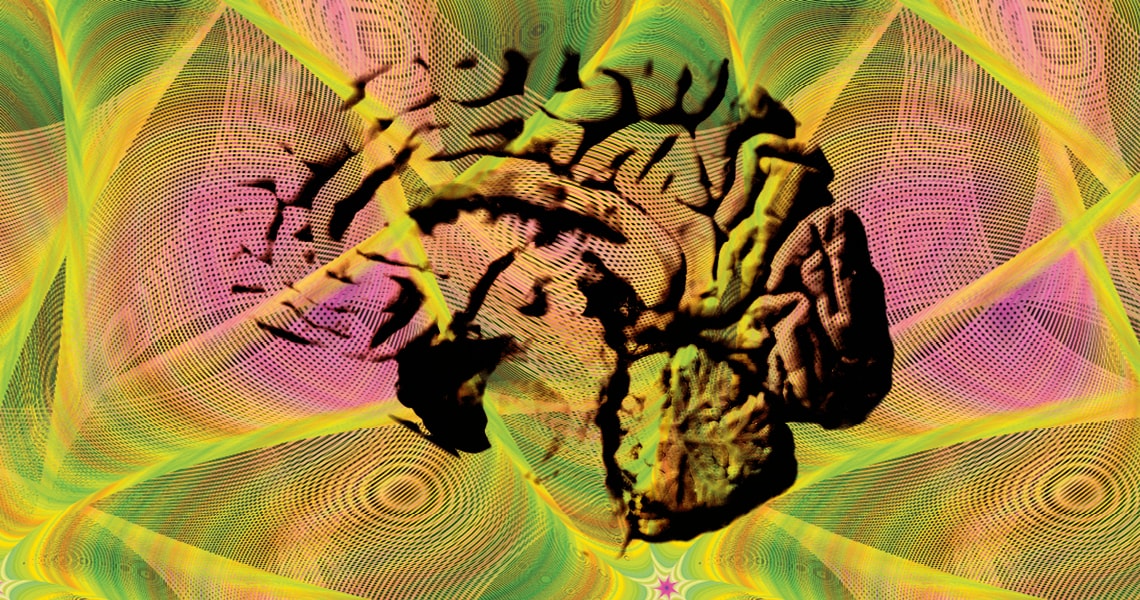In recent years, psychiatrists and neurologists have been disturbed by the cases that have presented the clinical characteristics of Alzheimer’s disease, but with no brain lesions or protein accumulation associated with this disease, representing more than half of cases diagnosed with dementia. A recent study provided a possible explanation for this situation: from 15% to 20% of the cases that were similar to Alzheimer’s could be a new form of dementia called LATE, an acronym for limbic-predominant age-related TDP43 encephalopathy. LATE was proposed in a scientific article published April 30th in the scientific journal Brain, by a group coordinated by Peter Nelson of the University of Kentucky. The group included 34 researchers from other universities in the United States, United Kingdom, Sweden, and Australia, and the proposal was based on autopsies of people over 80 years of age.
Alzheimer’s disease and LATE initially affect the same region of the brain, called the limbic system, but there are differences. The first causes gradual memory loss and can manifest from 65 years of age. The frequency of the second is greater starting at 80 years of age. The typical brain lesions of Alzheimer’s disease involve two markers—the beta amyloid peptide, which forms clusters (plaques) between the neurons, or the tau protein, which starts tangled inside the neurons—identified by positron emission tomography (PET) and by the analysis of cerebrospinal fluid (liquor). LATE is associated with the accumulation of the TDP-43 protein, which helps the RNA in its tasks in the cell nucleus. When it produces in excess, TDP-43 migrates to the cytoplasm and forms clusters that threaten the functioning of the neurons. In 2006, this protein was associated with a form of dementia related to the degeneration of the frontal and temporal lobes, and the other neurodegenerative disease, amyotrophic lateral sclerosis (ALS), characterized by the loss of motor neurons.
“We have yet to see if the accumulation of TDP-43 in the brain is simply a correlation, a simultaneous event, or effectively the cause of memory loss,” notes biochemist Sergio Teixeira Ferreira, professor at the Federal University of Rio de Janeiro (UFRJ). He believes that this same doubt could be applied to Alzheimer’s disease because there are people with many beta amyloid plaques and little memory loss, and also the contrary exists.
LATE broadens the differences among the forms of dementia. Two other forms confused with Alzheimer’s–argyrophilic grain disease (AGD), identified in 1987, and primary age-related tauopathy (PART), related to age, in 2014—they also manifest after 80 years of age and cause hippocampal atrophy, but only exhibit tau accumulation. “Before, any episode of memory loss, even if episodic, was viewed as a sign of Alzheimer’s,” comments neurologist Márcio Luiz Figueiredo Balthazar, professor at the School of Medical Sciences at the University of Campinas (FCM-UNICAMP). The most precise diagnosis can only be made after the patient’s death.
“Even with the discovery of this alternate form of senile dementia, Alzheimer’s disease will not likely stop being the primary cause of dementia in seniors,” confirms psychiatrist Orestes Vicente Forlenza, of the Institute of Psychiatry at the School of Medicine at the University of São Paulo (IPq-FM-USP). “However, it would be necessary to review epidemiological estimates. It is probable that the frequency rates of Alzheimer’s disease are inflated, since cases that are clinically diagnosed as Alzheimer’s are, in reality, attributed to LATE.” There are no markers yet for TDP-43 that can prove the diagnosis while the patient is living, but in his opinion, “late onset dementia with hippocampal atrophy and negative for beta amyloid and for tau can, in reality, be LATE.
The identification of proteins can facilitate the search for specific treatments for different forms of dementia, which is a growing problem in public health. According to the World Health Organization (WHO), the number of people with this type of psychiatric disorder has increased from 20 million in 1990 to almost 50 million today. In May, the WHO distributed a 96-page manual with orientation on how to reduce the risk of memory loss and dementia, such as reducing tobacco use, practicing physical activity, and controlling diabetes and hypertension. In January 2019, the group from UFRJ published a study in Nature Medicine, showing that the practice of physical exercise can effectively reduce memory loss and prevent the formation of beta amyloid plaques (see Pesquisa FAPESP issue no. 273).
Lithium, which has been used for decades to treat bipolar disorder, has appeared as a possibility for deterring gradual memory loss, which characterizes dementia and for which there are no medications. Repeating studies on experimental models and other tests on humans, the IPq team verified that lithium, in lower doses than that used for bipolar disorder, could help prevent memory loss and the formation of beta amyloid clusters. In this study, 61 people with mild cognitive impairment and with an average age of 72.6 years took lithium carbonate or a placebo for two years. They were monitored for more than two years, and the results were published in an article in April in the British Journal of Psychiatry. “Lithium in lower therapeutic doses was tolerated well, with no damage to the kidneys and thyroid,” notes Forlenza. The use of lithium to treat dementia now depends on larger group tests, as well as the definition of the best forms of use and the stages of the disease in which it could best function.
Scientific articles
NELSON, P. T. et al. Limbic-predominant age-related TDP-43 encephalopathy (LATE): Consensus working group report. Brain. Apr. 30. Online. 2019.
FORLENZA, O. V. et al. Clinical and biological effects of long-term lithium treatment in older adults with amnestic mild cognitive impairment: Randomised clinical trial. British Journal of Psychiatry. Online. Apr. 5, 2019.
LOURENÇO, M. V. et al. Exercise-linked FNDC5/irisin rescues synaptic plasticity and memory defects in Alzheimer’s models. Nature Medicine. Vol. 25, pp. 165–75. Jan. 7, 2019.


